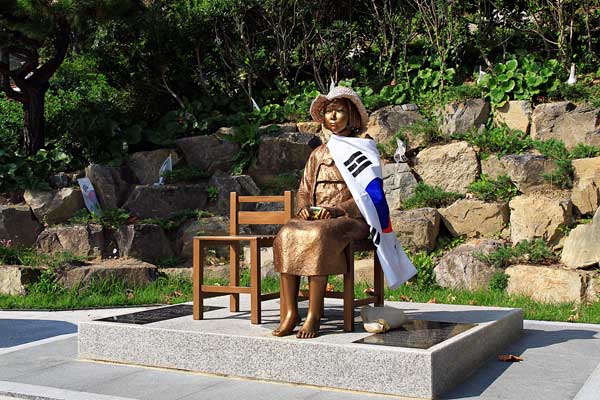First comfort women statue erected on Italian island of Sardinia

[An image of the Statue of Peace. Photo credit to Pxhere]
On the Italian island of Sardinia, the first comfort women statue, also known as the Statue of Peace, has been built.
Japanese officials have been trying to prevent the Italian delegates from taking this action, but their efforts have been futile.
The statue itself was donated by the “Korean Council for Justice and Remembrance of Military Sexual Slavery by Japan.”
This is because the mayor of Sadrinia, Rita Vallebella, wanted to commemorate the victims and raise awareness for women’s rights.
She added that the statue represents all victims of all kinds of wars, including the victims of the Ukrainian war and the Palestinian conflict.
People from all over the world are gathering to remember and honor the victims of the cruelty committed by Japan during World War II.
The Statue of Peace, often referred to as the “girl statue” in Korean, represents the women and girls forcibly taken to Japan and subjected to sexual enslavement by the Imperial Japanese Armed Forces.
Estimates of the number of victims range from 50,000 to 200,000, hailing from Korea, the Netherlands, China, the Philippines, Australia, and several other countries.
The movement to honor comfort women began on August 14, 1991, when Kim Haksoon publicly shared her harrowing experiences.
Following her testimony, other survivors came forward, leading to regular “Wednesday Demonstrations” in front of the Japanese Embassy in Seoul from January 14, 1992.
These protests inspired the council to erect a bronze statue of a comfort woman outside the Japanese Embassy in Seoul on December 14, 2011.
The statue depicts a young girl in traditional Korean clothing, facing the Japanese embassy, symbolically awaiting an apology from Japan.
The South Korean government has been asking Japan for some kind of acknowledgment of its past crimes for centuries, but the response has been tepid at best.
Today, only around nine comfort women survivors remain in Korea, still awaiting the apology they deserve.
Japan’s reluctance to address this issue has led to a strained relationship with various international communities.
On September 22, 2017, San Francisco built a memorial to comfort women, which strained its relationship with Osaka, Japan.
Similarly, in 2010, a brass plaque dedicated to the memory of comfort women was installed in a New Jersey park, and in May 2012, New Jersey officials rejected Japan’s request to remove it.
These memorials have sparked diplomatic tensions, which demonstrate Japan’s ongoing attempts to erase this dark chapter from its history.
Despite these challenges, the global community continues to push for recognition and justice for comfort women.
The recent statue in Sardinia is a testament to this enduring effort, as Koreans and their supporters hope for acknowledgement from Japan before the remaining survivors pass away.

- Eungyeol Han / Grade 11
- Westminster Canadian Academy

![THE HERALD STUDENT REPORTERS [US]](/assets/images/logo_student_us.png)
![THE HERALD STUDENT REPORTERS [Canada]](/assets/images/logo_student_ca.png)
